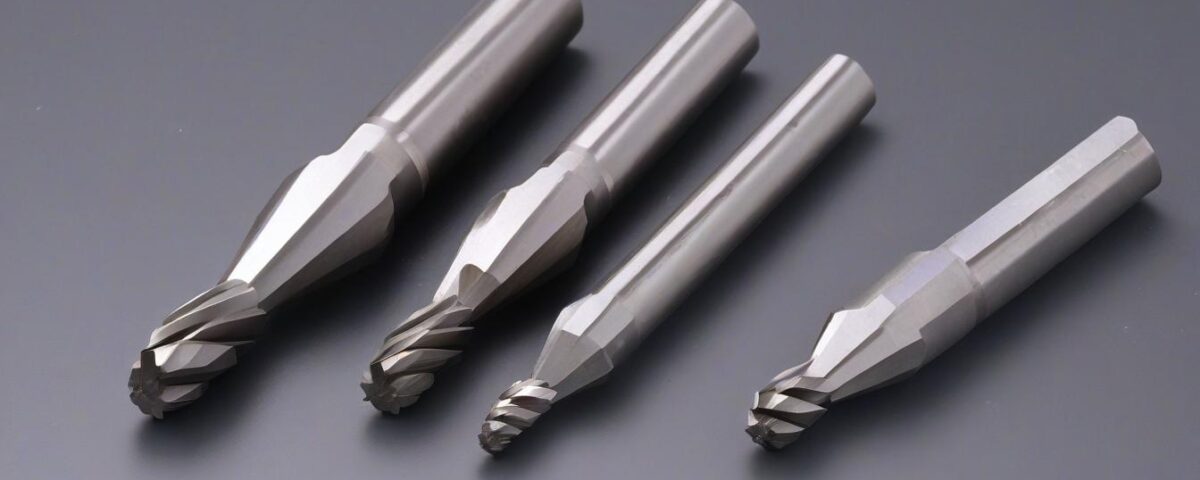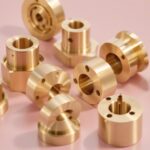
Common Challenges in Brass CNC Machining
13 August 2024
The Benefits of Acrylic CNC Machining for Custom Projects
16 August 2024Five-axis machining, significant advantages
It's clear that five-axis machining is increasingly popular in modern metal cutting. Five-axis machining offers significant advantages, including the ability to process complex-shaped parts using only one clamping, without changing the positioning of the workpiece. This ensures high machining accuracy and reduces machining cycle time.
Advancements in workpiece manufacturing technologies, such as precision forging, casting, and mainstream additive manufacturing, have led to workpieces with more complex geometric shapes. Cutting is used to reduce machining allowance and material in order to achieve the final shape of the workpiece. This requires high-performance cutting tools for finishing and machining complex geometric surfaces.
Traditionally, ball nose mills have been the go-to tools for machining 3D surfaces. However, developments in five-axis machining centers and modern CAM systems have brought new tools with different cutting-edge types to the market, such as curved or barrel end mills. Although these tools have been known to machinists, they have often been overlooked. Five-axis machining, combined with CNC software and computer modeling of complex tool configurations, has brought the application of barrel end mills back into the spotlight.
The cutting edges of these end mills are arc-shaped, representing an arc with a radius greater than the nominal radius of the tool. Unlike ball nose milling cutters, the use of curved milling cutters with "multi-pass milling technology" to machine surfaces can significantly increase the stepover, thereby reducing cutting times. When machining complex surfaces, three-axis CNC machine tools may not guarantee the correct cutting position of barrel-shaped tools. In contrast, five-axis machine tools can fully utilize the barrel milling cutter.
Barrel-shaped tools, economical and reasonable
Barrel-shaped end mills come in different configurations based on the cutting edge's direction relative to the tool axis. These configurations include pure barrel, tapered barrel, lens, and elliptical or parabolic. The blade shape of the tool determines its application. For instance, lens-shaped tools work well with both five-axis and three-axis machines, while end mills with tapered barrel profiles are only suitable for five-axis machines. The barrel-shaped tool design is used in multi-edge solid-end mills to provide higher tool accuracy and maximize the number of teeth of the tool.
ISCAR's NEOBARREL tool series includes several series. Figure 1 depicts a solid carbide end mill (SCEM) with a diameter range of 8-12 mm. The 10mm tapered barrel carbide end mill features a curved outer circle cutting edge with a radius of 85 mm. When compared to a 10mm ball-end milling cutter, this end mill has a step distance four times higher and can achieve the same machining surface roughness.
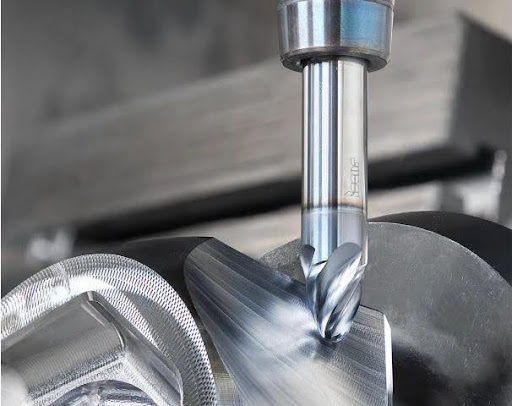
Figure 1: Solid carbide barrel milling cutter is effective in cnc machined curved shapes.
ISCAR's MULTI-MASTER series is a product line of replaceable carbide heads. The new tapered barrel cutter head of this series has the same cutting-edge shape and diameter range as SCEM and provides a variety of options for the application of the MULTI-MASTER series on five-axis machine tools. The replaceable head design of the MULTI-MASTER series of tools ensures the rational use of carbide and has significant economic and cost advantages. A wide range of cutter bodies, extensions, and reducers allow for customizable modular tool assemblies for complex machining projects.
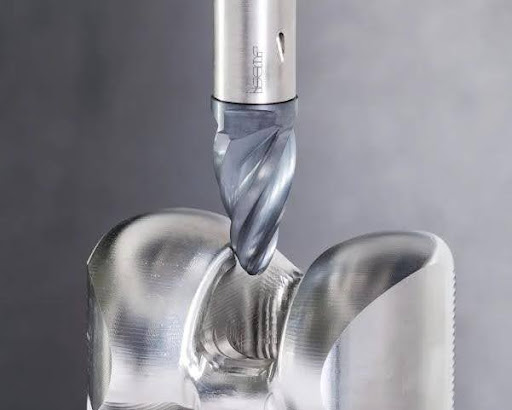
Figure 2 The solid-hardened replaceable barrel cutter head is successfully used in the cost-effective MULTI-MASTER design concept
Single-blade design, logical
ISCAR has recently introduced a new series of barrel end mills featuring a single-blade tool design.
Although single-blade tools typically offer lower accuracy compared to replaceable carbide tip tools or solid carbide end mills, with careful analysis and some compromises, single-blade tools can also compete with replaceable tip tools or solid carbide tools.
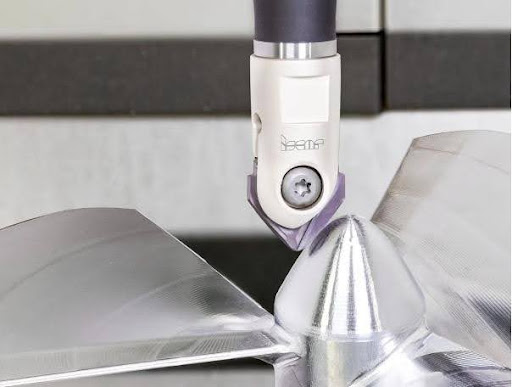
Figure 3 Single-insert barrel cutters demonstrate high-performance parameters when machining complex surfaces of critical CNC machining components.
To understand the benefits of the single-insert barrel cutter design, we need to consider several aspects.
Single-insert cutters are cost-effective because they can be used with a wider range of diameters, from 16mm to 25mm. The durable insert structure and high-rigidity insert clamping allow for increased feed per tooth, making them more efficient than carbide end mills and replaceable heads. By reducing the number of teeth, they also help control vibration during unstable machining. The BALLPLUS series of cutters can convert conventional cutters into barrel-end mills using barrel-edge inserts and offer a variety of cutter bodies, shanks, and extensions for easy tool customization. This makes the single-insert barrel cutter design a more logical and reasonable choice.
The future of barrel milling cutters in modern manufacturing looks promising. The metalworking industry has already developed various applications for barrel designs, including solid carbide barrel end mills, solid carbide exchangeable head barrel milling cutters, and single-insert barrel milling cutters. This comprehensive range of cutters is ready to face future manufacturing challenges.
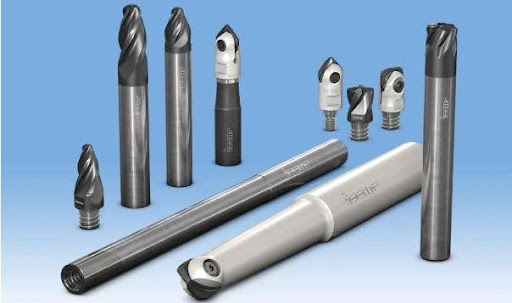
Figure 4 Barrel milling cutters with different design concepts
During rapid prototyping cnc machining, cutting fluid is often exposed to the skin.
The potential harm of cutting fluid to the human body includes skin diseases such as occupational acne, folliculitis, keratosis, and skin cancer. Cutting fluid can cause dryness of the skin surface, leading to degreasing, cracking, redness, swelling, suppuration, and other symptoms. Additionally, the bactericides in cutting fluid can cause irritation and damage to the skin.
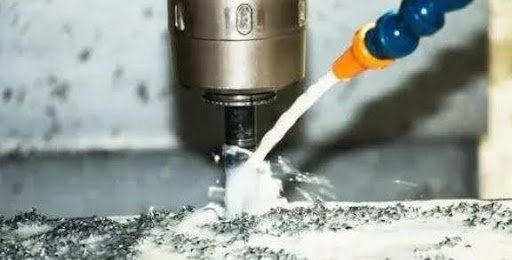
Respiratory damage: The mist and micro-droplets of oil from cutting fluid can irritate the respiratory system and cause inflammation. The unpleasant smell can also lead to respiratory damage, causing coughing and expectoration.
Carcinogenicity: The cutting fluid contains different chemicals like mineral oil, lubricants, and antioxidants. Some of these ingredients, such as alkanes, cycloalkanes, and a small amount of olefins and aromatic hydrocarbons, have serious carcinogenic effects. It also contains polycyclic aromatic hydrocarbons, which are known to be highly active carcinogens. Prolonged exposure to the human body may increase the risk of cancer.
Eye damage: Cutting fluid may splash into the eyes, causing eye stinging and inflammation.
Nervous system effects: Chemicals in some cutting fluids may have a negative impact on the nervous system, such as headaches, dizziness, blindness, and memory loss.
Lung and respiratory problems: Long-term inhalation of small particles of cutting fluid can cause irritation to the lungs and respiratory tract, resulting in chronic inflammation and breathing difficulties.
Liver and kidney problems: Certain chemicals in cutting fluid may cause damage to the liver and kidneys, such as hepatitis, cirrhosis, kidney failure, and other problems.
Immune system problems: Long-term exposure to cutting fluid may have a negative impact on the immune system, such as reduced immunity and increased risk of infection and disease.
In order to reduce the harm of cutting fluid to the human body, the following measures can be taken:
- Use low-toxic cutting fluid and minimize contact time with it.
- Wear personal protective equipment such as gloves, masks, and goggles to reduce skin and respiratory exposure.
- Ventilation equipment like fans or air purifiers should be used to decrease harmful gas concentration.
- Regularly check and maintain cutting fluid quality, replace it when necessary, and dispose of waste properly.
- Keep the workplace clean to prevent cutting fluid leakage and splashing.
- Provide thorough safety education and training to enhance employees' awareness and prevention of cutting fluid hazards.
If you wanna know more, please feel free to contact [email protected].
Anebon supports our purchasers with ideal premium quality products and is a substantial-level company. Becoming a specialist manufacturer in this sector, Anebon has acquired rich practical working experience in producing and managing for 2019 Good Quality Precision custom cnc machining parts/Precision Aluminum rapid CNC machining parts and CNC milled parts. The Aim of Anebon is to help customers realize their goals. Anebon is making great efforts to achieve this win-win situation and sincerely welcomes you to join us!

